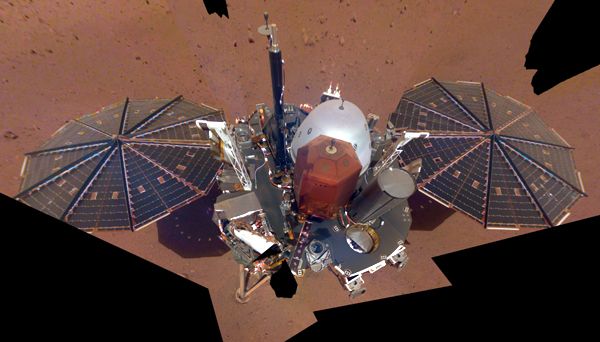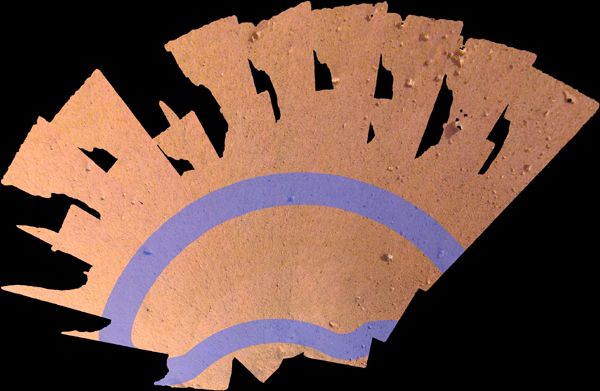
NASA / JPL - Caltech
NASA's InSight Takes Its First Selfie (News Release)
NASA's InSight lander isn't camera-shy. The spacecraft used a camera on its robotic arm to take its first selfie — a mosaic made up of 11 images. This is the same imaging process used by NASA's Curiosity rover mission, in which many overlapping pictures are taken and later stitched together. Visible in the selfie are the lander's solar panel and its entire deck, including its science instruments. Mission team members have also received their first complete look at InSight's "workspace" — the approximately 14-by-7-foot (4-by-2-meter) crescent of terrain directly in front of the spacecraft. This image is also a mosaic composed of 52 individual photos.
In the coming weeks, scientists and engineers will go through the painstaking process of deciding where in this workspace the spacecraft's instruments should be placed. They will then command InSight's robotic arm to carefully set the seismometer (called the Seismic Experiment for Interior Structure, or SEIS) and heat-flow probe (known as the Heat Flow and Physical Properties Package, or HP3) in the chosen locations. Both work best on level ground, and engineers want to avoid setting them on rocks larger than about a half-inch (1.3 cm).
"The near-absence of rocks, hills and holes means it'll be extremely safe for our instruments," said InSight's Principal Investigator Bruce Banerdt of NASA's Jet Propulsion Laboratory in Pasadena, California. "This might seem like a pretty plain piece of ground if it weren't on Mars, but we're glad to see that."
InSight's landing team deliberately chose a landing region in Elysium Planitia that is relatively free of rocks. Even so, the landing spot turned out even better than they hoped. The spacecraft sits in what appears to be a nearly rock-free "hollow" — a depression created by a meteor impact that later filled with sand. That should make it easier for one of InSight's instruments, the heat-flow probe, to bore down to its goal of 16 feet (5 meters) below the surface.
About InSight
JPL manages InSight for NASA's Science Mission Directorate. InSight is part of NASA's Discovery Program, managed by the agency's Marshall Space Flight Center in Huntsville, Alabama. Lockheed Martin Space in Denver built the InSight spacecraft, including its cruise stage and lander, and supports spacecraft operations for the mission.
A number of European partners, including France's Centre National d'Études Spatiales (CNES) and the German Aerospace Center (DLR), are supporting the InSight mission. CNES and the Institut de Physique du Globe de Paris (IPGP) provided the Seismic Experiment for Interior Structure (SEIS) instrument, with significant contributions from the Max Planck Institute for Solar System Research (MPS) in Germany, the Swiss Institute of Technology (ETH) in Switzerland, Imperial College London and Oxford University in the United Kingdom, and JPL. DLR provided the Heat Flow and Physical Properties Package (HP3) instrument, with significant contributions from the Space Research Center (CBK) of the Polish Academy of Sciences and Astronika in Poland. Spain's Centro de Astrobiología (CAB) supplied the wind sensors.
Source: NASA.Gov
****

NASA / JPL - Caltech

No comments:
Post a Comment